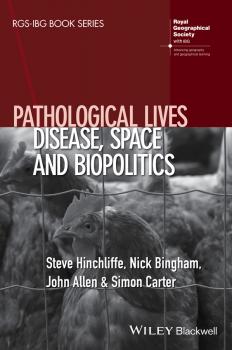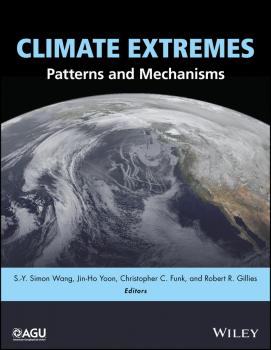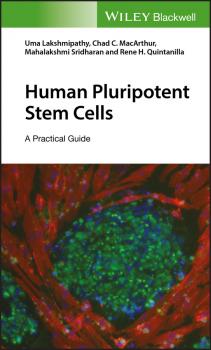Прочая образовательная литература
Различные книги в жанре Прочая образовательная литератураDoppler Radar Physiological Sensing
Presents a comprehensive description of the theory and practical implementation of Doppler radar-based physiological monitoring This book includes an overview of current physiological monitoring techniques and explains the fundamental technology used in remote non-contact monitoring methods. Basic radio wave propagation and radar principles are introduced along with the fundamentals of physiological motion and measurement. Specific design and implementation considerations for physiological monitoring radar systems are then discussed in detail. The authors address current research and commercial development of Doppler radar based physiological monitoring for healthcare and other applications. Explains pros and cons of different Doppler radar architectures, including CW, FMCW, and pulsed Doppler radar Discusses nonlinear demodulation methods, explaining dc offset, dc information, center tracking, and demodulation enabled by dc cancellation Reviews advanced system architectures that address issues of dc offset, spectrum folding, motion interference, and range resolution Covers Doppler radar physiological measurements demonstrated to date, from basic cardiopulmonary rate extractions to more involved volume assessments Doppler Radar Physiological Sensing serves as a fundamental reference for radar, biomedical, and microwave engineers as well as healthcare professionals interested in remote physiological monitoring methods.
Lysophospholipid Receptors. Signaling and Biochemistry
The current state of the science supporting new research in lysophospholipids The study of lysophospholipids exploded with the discovery of cell surface receptors on both lysophosphatidic acid (LPA) and sphingosine 1-phosphate (S1P). Since then, thousands of original research reports—ranging from fundamental cell signaling to the physiology and pathophysiology of individual organ systems—have centered on lysophospholipids. This book draws together and analyzes the current literature to provide readers with a state-of-the-science review as well as current techniques that support research in all aspects of the field of lysophospholipid signaling. Lysophospholipid Receptors is divided into three sections: Receptors and other possible effectors Enzymes Physiology and pathophysiology Within each section, the authors explain the similarities and differences between LPA and S1P signaling. Examples are provided that demonstrate the underlying mechanisms of lysophospholipid signaling across a broad range of organ systems, such as S1P signaling in cardiovascular physiology and disease and the neural effects of LPA signaling. Extensive references at the end of each chapter provide a gateway to the literature and facilitate further research into individual topics. Each chapter has been authored by one or more leading international authorities in lysophospholipid research. Based on a thorough analysis of the current research, the authors set forth what is established science and offer their expert opinion and perspective on new and emerging areas of research, setting the stage for further investigations that will solve current problems in the field.
Critical Educational Psychology
The first textbook of its kind, Critical Educational Psychology is a forward-thinking approach to educational psychology that uses critical perspectives to challenge current ways of thinking and improve practice.
The Chemostat. Mathematical Theory of Microorganism Cultures
Invented by J. Monod, and independently by A. Novick and L. Szilard, in 1950, the chemostat is both a micro-organism culturing device and an abstracted ecosystem managed by a controlled nutrient flow. This book studies mathematical models of single species growth as well as competition models of multiple species by integrating recent work in theoretical ecology and population dynamics. Through a modeling approach, the hypotheses and conclusions drawn from the main mathematical results are analyzed and interpreted from a critical perspective. A large emphasis is placed on numerical simulations of which prudent use is advocated. The Chemostat is aimed at readers possessing degree-level mathematical knowledge and includes a detailed appendix of differential equations relating to specific notions and results used throughout this book.
Ionospheric Space Weather. Longitude Dependence and Lower Atmosphere Forcing
This monograph is the outcome of an American Geophysical Union Chapman Conference on longitude and hemispheric dependence of ionospheric space weather, including the impact of waves propagating from the lower atmosphere. The Chapman Conference was held in Africa as a means of focusing attention on an extensive geographic region where observations are critically needed to address some of the fundamental questions of the physical processes driving the ionosphere locally and globally. The compilation of papers from the conference describes the physics of this system and the mechanisms that control ionospheric space weather in a combination of tutorial-like and focused articles that will be of value to the upper atmosphere scientific community in general and to ongoing global magnetosphere-ionosphere-thermosphere (MIT) modeling efforts in particular. A number of articles from each science theme describe details of the physics behind each phenomenon that help to solve the complexity of the MIT system. Because this volume is an outcome of the research presented at this first space science Chapman Conference held in Africa, it has further provided an opportunity for African scientists to communicate their research results with the international community. In addition, the meeting and this conference volume will greatly enhance the space science education and research interest in the African continent and around the world. Ionospheric Space Weather includes articles from six science themes that were discussed at the Chapman Conference in 2012. These include: Hemispherical dependence of magnetospheric energy injection and the thermosphere-ionosphere response Longitude and hemispheric dependence of storm-enhanced densities (SED) Response of the thermosphere and ionosphere to variability in solar radiation Longitude spatial structure in total electron content and electrodynamics Temporal response to lower-atmosphere disturbances Ionospheric irregularities and scintillation Ionospheric Space Weather: Longitude Dependence and Lower Atmosphere Forcing will be useful to both active researchers and advanced graduate students in the field of physics, geophysics, and engineering, especially those who are keen to acquire a global understanding of ionospheric phenomena, including observational information from all longitude sectors across the globe.
Quantum Information and Computation for Chemistry
Examines the intersection of quantum information and chemical physics The Advances in Chemical Physics series is dedicated to reviewing new and emerging topics as well as the latest developments in traditional areas of study in the field of chemical physics. Each volume features detailed comprehensive analyses coupled with individual points of view that integrate the many disciplines of science that are needed for a full understanding of chemical physics. This volume of the series explores the latest research findings, applications, and new research paths from the quantum information science community. It examines topics in quantum computation and quantum information that are related to or intersect with key topics in chemical physics. The reviews address both what chemistry can contribute to quantum information and what quantum information can contribute to the study of chemical systems, surveying both theoretical and experimental quantum information research within the field of chemical physics. With contributions from an international team of leading experts, Volume 154 offers seventeen detailed reviews, including: Introduction to quantum information and computation for chemistry Quantum computing approach to non-relativistic and relativistic molecular energy calculations Quantum algorithms for continuous problems and their applications Photonic toolbox for quantum simulation Vibrational energy and information transfer through molecular chains Tensor networks for entanglement evolution Reviews published in Advances in Chemical Physics are typically longer than those published in journals, providing the space needed for readers to fully grasp the topic: the fundamentals as well as the latest discoveries, applications, and emerging avenues of research. Extensive cross-referencing enables readers to explore the primary research studies underlying each topic.
Pathological Lives. Disease, Space and Biopolitics
Pandemics, epidemics and food borne diseases are a major global challenge. Focusing on the food and farming sector, and mobilising social theory as well as empirical enquiry, Pathological Lives investigates current approaches to biosecurity and ask how pathological lives can be successfully ‘regulated’ without making life more dangerous as a result. Uses empirical and social theoretical resources developed in the course of a 40-month research project entitled ‘Biosecurity borderlands’ Focuses on the food and farming sector, where the generation and subsequent transmission of disease has the ability to reach pandemic proportions Demonstrates the importance of a geographical and spatial analysis, drawing together social, material and biological approaches, as well as national and international examples The book makes three main conceptual contributions, reconceptualising disease as situated matters, the spatial or topological analysis of situations and a reformulation of biopolitics Uniquely brings together conceptual development with empirically and politically informed work on infectious and zoonotic disease, to produce a timely and important contribution to both social science and to policy debate
Copper-Catalyzed Amination of Aryl and Alkenyl Electrophiles
The metal-catalyzed amination of aryl and alkenyl electrophiles has developed into a widely used methodology for the synthesis of natural products, active pharmaceutical ingredients, agricultural chemicals, and materials for molecular electronics. Copper catalysts promote the coupling of a wide range of nitrogen nucleophiles, including amines, amides, and heteroaromatic nitrogen compounds with aryl and alkenyl halides. The reactivity profile of copper catalysts is complementary to that of palladium catalysts in many cases. Copper catalysts are highly effective with less nucleophilic nitrogen nucleophiles, such as amides and azoles, whereas palladium catalysts are more effective with more nucleophilic amine nucleophiles. Copper is an attractive alternative to palladium due to its significantly lower cost. In addition, high activity palladium catalysts require expensive and often air-sensitive ligands, whereas the modern copper systems use relatively stable and inexpensive diamine or amino acid ligands. Copper-catalyzed C?N coupling reactions are tolerant of a wide range of functional groups and have been applied to the synthesis of a variety of complex natural products. Significant work has also been done to understand the mechanism of these reactions. Current mechanistic understanding of these methodologies is covered in this monograph. The contents of the book are taken from the comprehensive review of the topic in the Organic Reactions series. Optimal experimental conditions for the amination of aryl and alkenyl halides with all classes of nitrogen nucleophiles are presented. Specific experimental procedures from the literature are provided for the major classes of copper-catalyzed C?N coupling reactions. A tabular survey of all examples of Cu-catalyzed arylation and alkenylation of nitrogen nucleophiles is presented in 35 tables organized by nitrogen nucleophile and electrophilic coupling partner. The literature is covered through December 2015 and provides 300 recent citations to supplement the 680 citations of the original hardbound chapter. These latest literature references have been collected in separate sections according to the sequence of the tables in the tabular survey section. In each of the sections, the individual citations have been arranged in alphabetic order of the author names. Copper-Catalyzed Amination of Aryl and Alkenyl Electrophiles is intended to provide organic chemists with an accessible, but detailed, introduction to this important class of transformations.
Climate Extremes. Patterns and Mechanisms
Although we are seeing more weather and climate extremes, individual extreme events are very diverse and generalization of trends is difficult. For example, mid-latitude and subtropical climate extremes such as heat waves, hurricanes and droughts have increased, and could have been caused by processes including arctic amplification, jet stream meandering, and tropical expansion. This volume documents various climate extreme events and associated changes that have been analyzed through diagnostics, modeling, and statistical approaches. The identification of patterns and mechanisms can aid the prediction of future extreme events. Volume highlights include: Compilation of processes and mechanisms unique to individual weather and climate extreme events Discussion of climate model performance in terms of simulating high-impact weather and climate extremes Summary of various existing theories, including controversial ones, on how climate extremes will continue to become stronger and more frequent Climate Extremes: Patterns and Mechanisms is a valuable resource for scientists and graduate students in the fields of geophysics, climate physics, natural hazards, and environmental science. Read an interview with the editors to find out more: https://eos.org/editors-vox/how-does-changing-climate-bring-more-extreme-events
Human Pluripotent Stem Cells. A Practical Guide
Comprehensive coverage of the entire induced pluripotent stem cell basic work flow Pluripotent stem cells (PSC) can divide indefinitely, self-renew, and can differentiate to functionally reconstitute almost any cell in the normal developmental pathway, given the right conditions. This comprehensive book, which was developed from a training course, covers all of the PSCs (embryonic, embryonic germ, and embryonic carcinoma) and their functions. It demonstrates the feeder-dependent and feeder-free culture of hESC and hiPSC, which will be referred to in all protocols as PSCs. It also addresses the methods commonly used to determine pluripotency, as defined by self-renewal marker expression and differentiation potential. Human Pluripotent Stem Cells: A Practical Guide offers in-depth chapter coverage of introduction to stem cell, PSC culture, reprogramming, differentiation, PSC characterization, and more. It also includes four appendixes containing information on reagents, medias, and solutions; common antibodies; consumable and equipment; and logs and forms. Includes helpful tips and tricks that are normally omitted from regular research papers Features useful images to support the technical aspects and results visually as well as diagrammatic illustrations Presents specific sections (ie: reprogramming, differentiation) in a concise and easily digestible manner Written by experts with extensive experience in stem cell technologies Human Pluripotent Stem Cells: A Practical Guide is an ideal text for stem cell researchers, including principal investigators, and others in university and industry settings, and for new graduate students in PSC labs.









